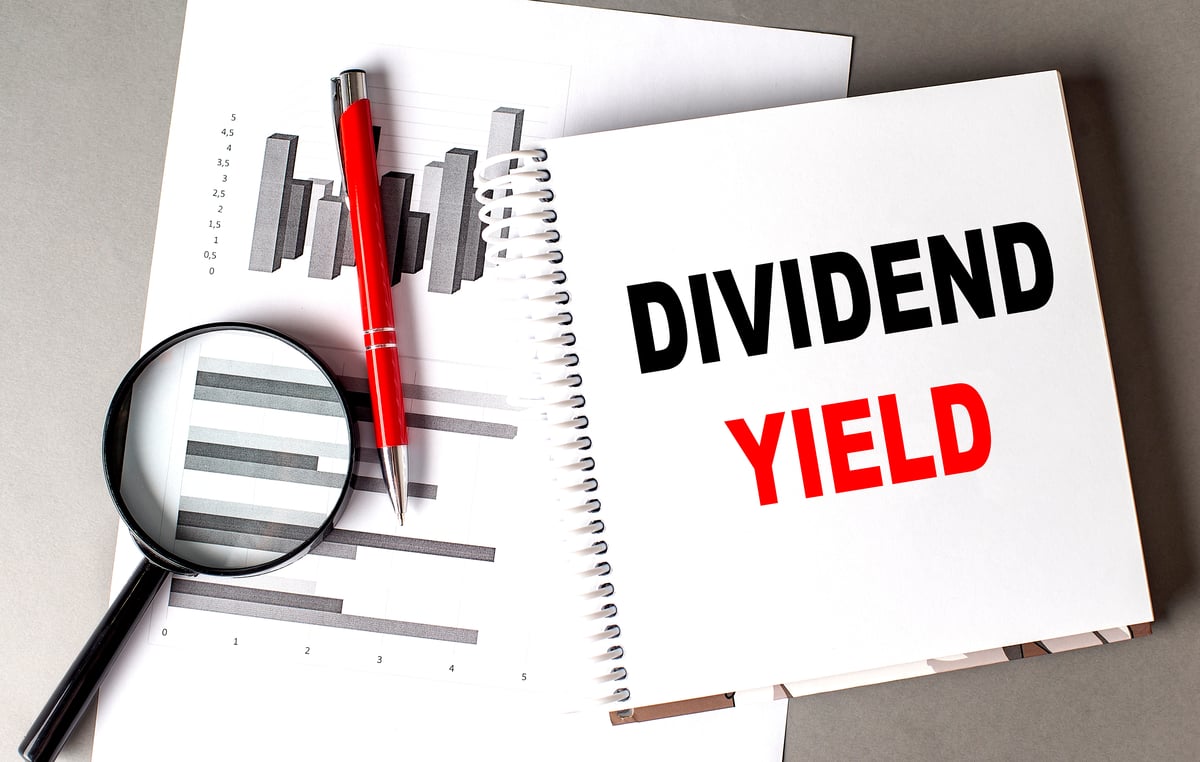In periods of rising inflation and slowing economic growth, one constant investors can count on is the reliability of dividend stocks to see them through.
Earlier this year, the asset managers at Hartford Funds released a report showing the performance of the benchmark S&P 500 with dividends and without, going all the way back to 1930. It found dividend-paying stocks contributed 41% to the total return of the index over that 90-year period.
In addition to wars and recessions, the time period included the 2000s -- the so-called "lost decade," when the bursting of the tech stock bubble, 9/11, and the housing market crash resulted in the S&P 500 generating negative returns. Dividend stocks, however, returned a positive 1.8%.

Image source: Getty Images.
The study also found that from 1970 on, dividends represented an astounding 84% of the index's total return. Reinvesting dividends in the benchmark, coupled with the power of compounding, would have turned a $10,000 investment into more than $3.8 million compared to the $627,161 that grubstake would have become based just on the index's price alone.
Although you might be convinced that buying dividend-paying stocks is a proven, profitable strategy for generating superior long-term returns, the obvious next question is: Which dividend stocks do you buy?
Simply chasing yield is a risky pursuit since a higher yield often carries higher risk, but whether you're a growth or value investor, there's an income stock that can fit into everyone's portfolio. The following pair of dividend stocks happen to not only be solid income stocks, but also benefit from being dirt cheap.
Annaly Capital Management
The largest mortgage real estate investment trust (REIT) by market cap, Annaly Capital Management (NLY +0.44%) is also the premier mREIT, investing in mortgages and mortgage-backed securities typically backed by the full faith and credit of the federal government through agencies including Fannie Mae, Freddie Mac, and Ginnie Mae. They represent 99% of its mortgage portfolio, as of the end of June.
The goal for Annaly and other mREITs is to maximize the difference between the average yield they receive from their mortgage securities and what they pay to borrow money. That means one of their biggest risks is easy-money Federal Reserve policy, which keeps interest rates artificially low and induces homeowners to refinance their higher-rate mortgages for lower-rate ones.
That's why Annaly is experiencing an increase in its constant pre-payment rate (CPR), or the percentage of its portfolio that it expects to be paid off within a year. Its CPR jumped to 26.4% in the second quarter from 23.9% in the first quarter. While it expects its long-term CPR to be 12.9% -- better than the 18% it forecast a year ago -- that's still up from the 11.8% rate Annaly expected two months ago.
Fortunately, with the economic outlook clouded, the Fed is not going to undertake any changes in policy that will dramatically upset the apple cart.
Annaly's stock is down 10% from recent highs, but it trades at around 4 times trailing earnings and 8 times analysts' estimates. Its dividend currently yields 10% annually, right where it has averaged over the past two decades, a period where the mREIT has returned some $20 billion to shareholders in the form of dividend income.

Image source: Getty Images.
Viatris
Formed last November via the $12 billion merger of the branded medicines business of Pfizer's Upjohn unit and generic-drug maker Mylan, Viatris (VTRS +1.58%) is making a go of it by building on the best of both worlds. The market, though, is worried about its ability to make a profit while carrying significant amounts of debt.
Since being spun off, Viatris has produced substantial losses, but the company anticipates that a quarter of its outstanding debt will be repaid by 2023. That's when it expects to achieve $1 billion in cost synergies, or double the amount it expects this year.
On an adjusted basis, it has produced net earnings of $2.3 billion, or more than twice as much as it generated a year ago.
After debt reduction, Viatris' management would like to reinvest some annual operating cash flow into new research and development. That should give it improved financial flexibility, which would enable the biotech to reward its shareholders further, either by repurchasing its own stock, lifting its dividend, or kick-starting its internal drug development program.
Viatris is also perfectly positioned to take advantage of an aging U.S. and global population through its leading generic division as the industry grows almost 6% annually -- from $172 billion last year to $240 billion by 2026. It also just recently won U.S. Food and Drug Administration approval for Semglee, an insulin drug for treating diabetes and the first interchangeable biosimilar in the U.S.
Viatris trades at less than 4 times earnings estimates, about 80% of its book value, and 10 times the free cash flow it produces. The dividend it initiated after its spinoff yields 3.2% annually, giving investors a chance to buy this dirt-cheap biotech before it unlocks the value inherent in its business.






